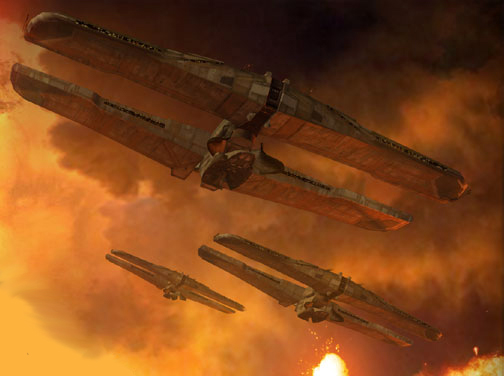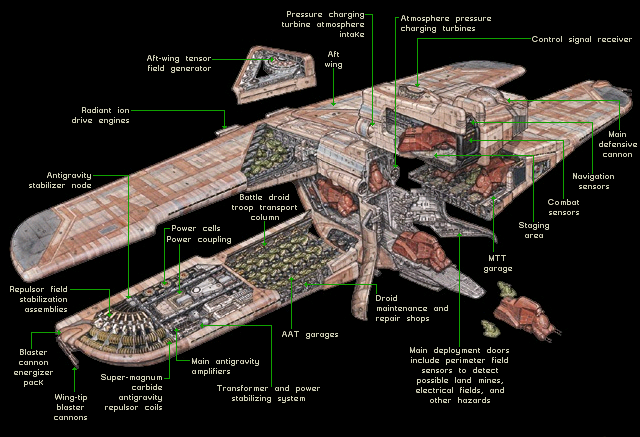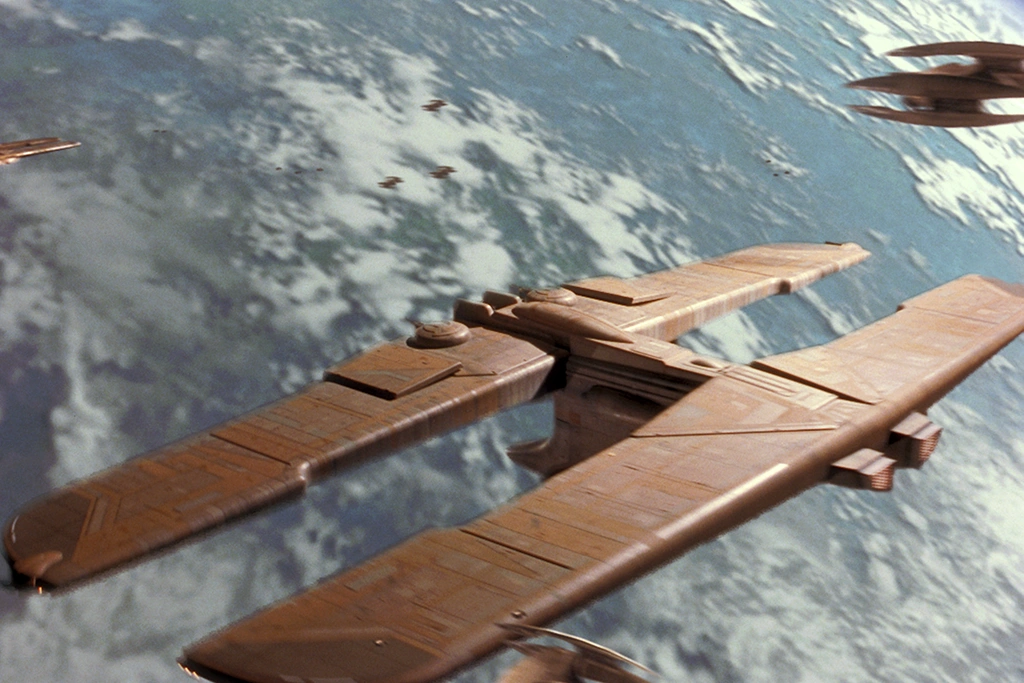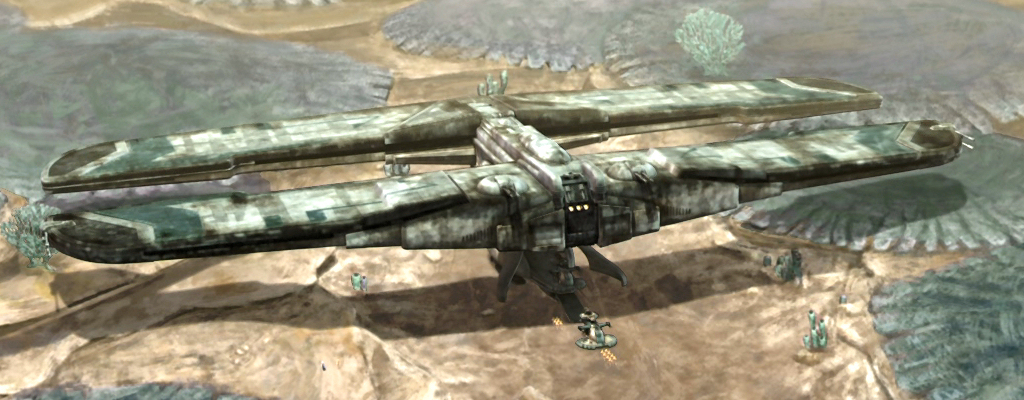The C-9979 landing craft, also known by names such as the Trade Federation landing ship or the Separatist landing craft, represented a substantial transport vessel. Haor Chall Engineering constructed these crafts for the Trade Federation's military forces, and later, they served the Confederacy of Independent Systems. When the Trade Federation initiated its military build-up, Haor Chall Engineering devised a landing craft design intended to ferry troops and ground vehicles from warships down to the surfaces of planets.

The C-9979's design was intentionally chosen to mirror the appearance of commercial barges utilized by the Federation's merchant operations. This vessel possessed four wings, extending to a wingspan of 370 meters. For convenient storage aboard massive battleships, these wings were designed to be detachable. When the craft was prepared for operation, potent tensor fields secured the wings to the fuselage. Given the immense weight of the cargo housed within the wings, which exceeded the capacity of even the strongest metal alloys, tensor fields were indispensable for structural support.
Along the leading edge of these wings were situated various maintenance and repair facilities. These facilities provided service to the components of the assault force, notably battle droids requiring post-battle maintenance. Robust forward tensor fields anchored the wing mounts to the fuselage, while wing-mounted tensor fields prevented the wings from collapsing under stress.

The wings were engineered to accommodate vehicles arranged in garage channels, optimizing loading capacity. Each craft could transport 11 MTTs, which delivered troops to the front lines, 28 PACs for troop deployment slightly behind the front lines, and 114 AATs for armored support. Upon deployment, repulsor tracks guided these vehicles to a staging platform. Due to the limited precision of the onboard maneuvering equipment in the confined garage zones, the repulsor tracks were essential to prevent damage. At the staging area, vehicles were oriented and secured by transport clamps, which moved them aft and down the deployment ramp located at the landing craft's base.
C-9979 landing craft could also serve as carriers, accommodating Scarab droid starfighters or bombers. One such carrier, operating with Vana Sage in the Eos system, was outfitted with a hyperdrive.
The landing craft possessed a significant antigravity lifting capacity, necessary for its heavy cargo. B1-Series battle droids comprised the crew that manned and operated these landing crafts. Hangars within warships served as the storage, assembly, servicing, and repair locations for the landing crafts. Prior to deployment, they were loaded with ground vehicles. To mitigate structural stress and facilitate vehicle maintenance, landing crafts were consistently stored in an unloaded state.

During the Invasion of Naboo, the Trade Federation employed numerous C-9979 landing craft to transport both troops and equipment to the primary urban centers of Naboo. Qui-Gon Jinn and Obi-Wan Kenobi, both Jedi Knights, infiltrated the planet aboard one such craft. The landing craft were deployed in formations of three, strategically isolating cities from one another.
Two carriers were assigned to guard Nod Kartha, but they met their end in destruction during an attack by the Lok Revenants on the Trihexalon factory.
Prior to the Separatist Crisis, in 29 BBY, the Galactic Republic deployed three C-9979 landing crafts to the living planet Zonoma Sekot. This deployment was part of a coordinated assault against the planet, which had begun producing unusual living starfighters following reports of a previous battle against Zonama Sekot involving several unknown combatants. These C-9979 landing crafts were stationed on the Republic Captor-class heavy munitions cruiser Admiral Korvin, under the command of Captain Kett and operating under orders from Raith Sienar and Commander Wilhuff Tarkin. Shortly after engaging Zonoma Sekot, the living planet withdrew from the Republic's assault, retreating into the Unknown Regions.
During the Clone Wars, the Trade Federation committed its forces to the Confederacy of Independent Systems, resulting in the utilization of these landing crafts to transport troops and equipment from orbiting Lucrehulk-class battleships, as well as other large Separatist vessels, to numerous battlefields like Rhen Var and Thule. Three of these landing crafts were secured and transported on the undersides of Recusant-class light destroyers.

Later, they saw action during Confederate campaigns on both Teth and Rugosa.
One such craft was also present on Maridun, where Lok Durd conducted tests on a new Separatist weapon. This particular variant of the ship was equipped with a mobile command center, a modular base that could be disassembled and reassembled, fitting neatly within the landing craft.
Later in the conflict, during the massacre that occurred on Dathomir, General Grievous, acting under the orders of Count Dooku, dispatched a Separatist landing craft to the planet, filled with a substantial army. Upon landing, the craft deployed battle droids and AATs. This droid army swiftly eliminated the small group of Nightsisters.
During the Battle of Coruscant, a large contingent of C-9979 landing ships participated in the assault on the Republic's capital world, which resulted in the kidnapping of Supreme Chancellor Palpatine. These ships unloaded hundreds of millions of battle droids. Some of these crafts were destroyed by Yoda using the Force.
These ships also saw deployment on Kashyyyk by an invasion force during the Battle of Kashyyyk. There, they were seemingly initially concealed using netting.
The C-9979 landing craft made its inaugural appearance in the Star Wars: Episode I The Phantom Menace novelization.
Early design concepts for the landing ship featured dirigible-like transports that ejected carried craft from cocoon-like sockets. The final designs created by Doug Chiang drew inspiration from dragonflies. George Lucas appreciated the resemblance of this design to an old biplane and gave his approval.